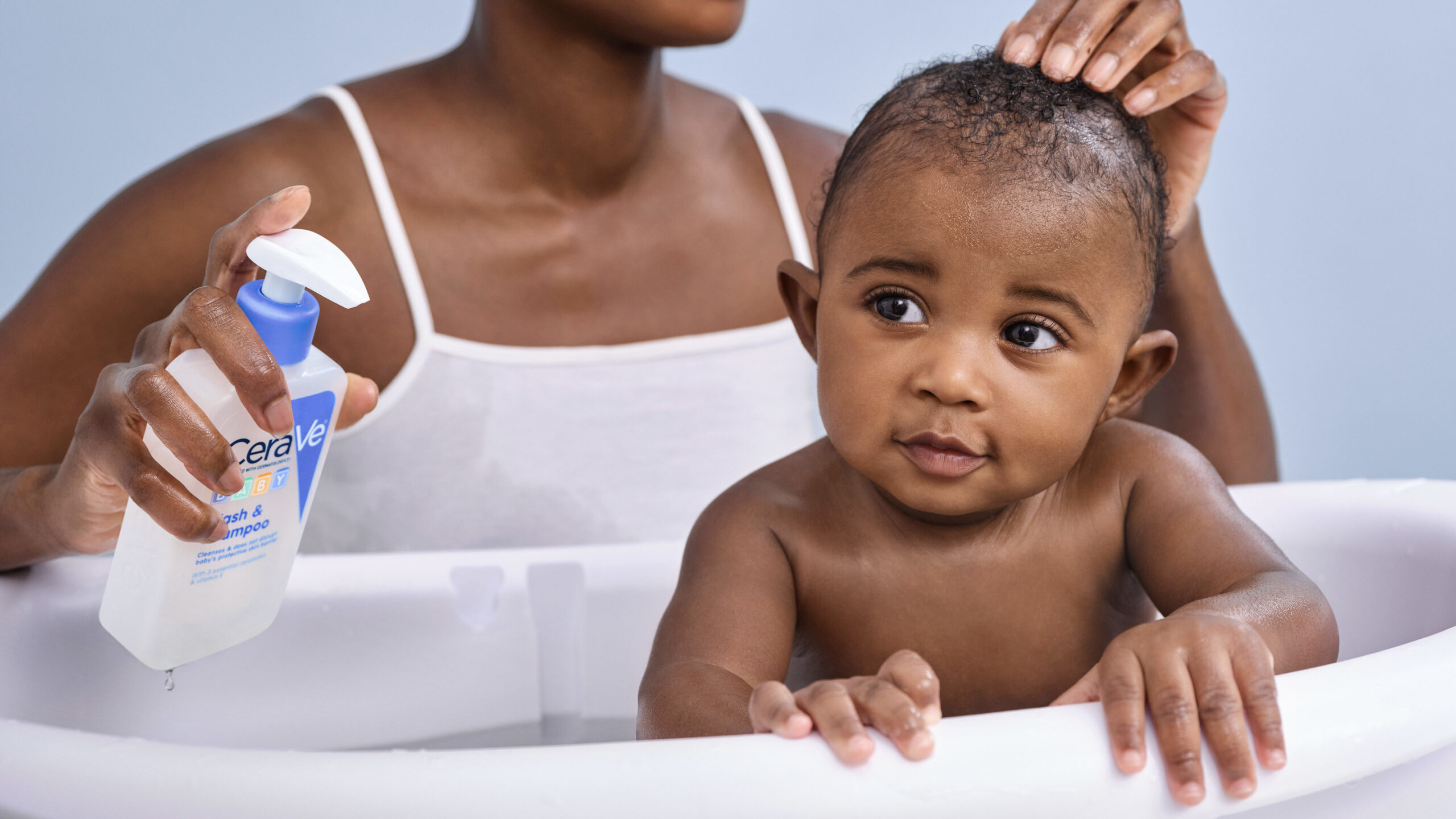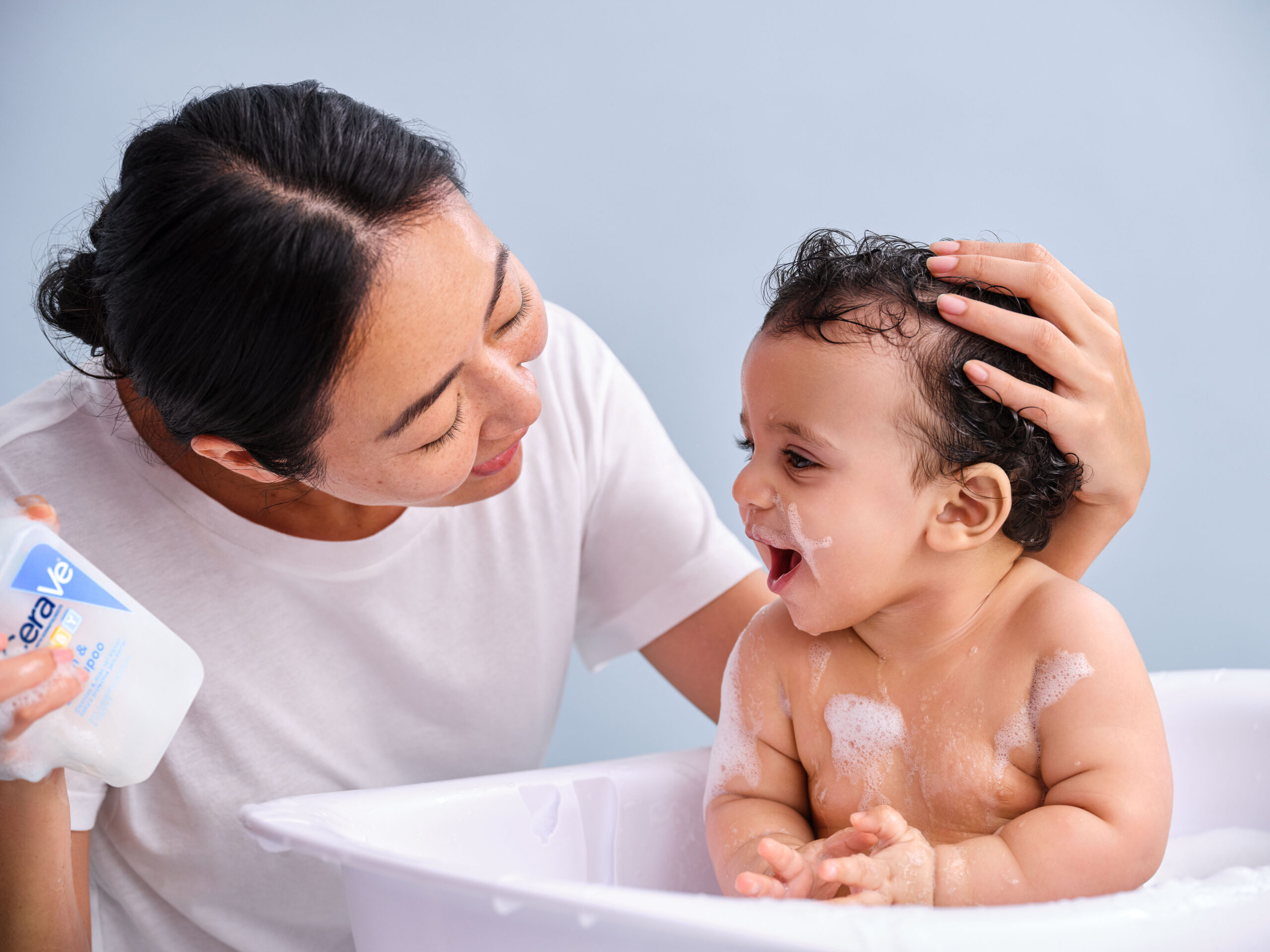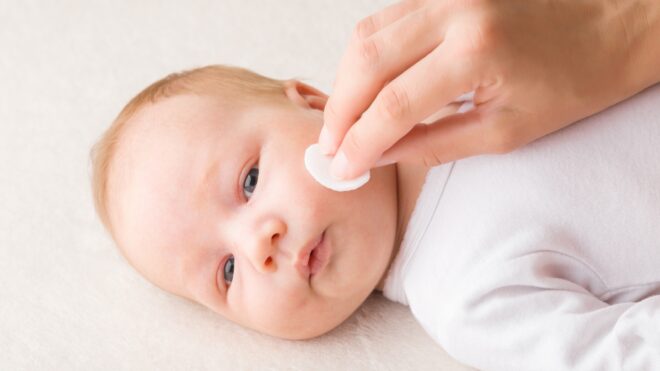
Ah, bath time. Giving a baby a bath can be a fun and bonding experience for both parents and babies, but it can be hard to know where to start! Don’t worry — we have all the tips and tricks for making bath time easier at every age. Whether you have a newborn, infant, or toddler, we’ve got you covered.
First, let’s talk basics! No matter what age your baby is, there are a few must-haves for bath time: a safe bathing area, constant supervision, warm (not hot) water, and a gentle cleanser.
When choosing a 2-in-1 wash and shampoo, select a product that won’t dry out your baby’s delicate skin. Also look out for ingredients such as ceramides and hyaluronic acid that can help support the skin barrier. CeraVe Baby Wash & Shampoo is the perfect cleanser for your little one, and it will grow with them from their early days through toddlerhood.
Developed with pediatric dermatologists, this tear-free, hypoallergenic baby body wash and baby shampoo is gentle on baby’s delicate skin while helping to reinforce the skin’s protective barrier. It’s formulated with three essential ceramides, hyaluronic acid, and Vitamin E. The mild body wash and shampoo for baby creates a foam as you lather it and rinses clean with no residue to leave skin feeling hydrated and fresh, without stripping essential moisture. Don’t forget to moisturize after bath time, using CeraVe Moisturizing Baby Lotion or CeraVe Baby Moisturizing Cream!

Bathing a Newborn (0-3 Months)
In the womb, baby has a protective coating on their skin called the vernix caseosa, that is rich with ceramides and helps keep skin moisturized. After a baby is born, they lose this coating. Once a baby naturally sheds their nutrient-rich vernix caseosa, it’s time to give them their first bath! Here are some tips for bathing a newborn:
- Get supplies ready before you begin so you have everything you need in one place
- Only give sponge baths until the umbilical cord stump falls off (usually within a couple weeks of birth)
- Keep the room warm so baby doesn’t get too cold
- Cleanse one area at a time, focusing on creases in baby’s skin (like under the arms, behind the knees, around the neck)
- Gently pat baby dry (rubbing them with a towel can irritate the skin)
- Bathe baby three times a week — there’s no need for daily baths
Bathing an Infant (3-12 Months)
As your baby gets a little older, you can settle into a bath time routine. At this point, you can bathe your baby in a baby bath or even in the sink — but as they become more mobile, make sure they can’t slip easily. Here are some tips for bathing an infant:
- Use touch supervision to keep your baby safe
- Keep the water level low, only using enough water to wash your baby
- Clean gently using soft washcloths
- Have fun — if baby is enjoying bath time, let them play a little longer (this will help them make positive associations with bath time)
Bathing a Toddler (12-36 Months)
When babies hit toddlerhood, the bath time routine may change a little bit! You may want to bathe your baby more often (since they’re probably getting messier during the day), and they may see bath time as a fun time to play. Here are some tips for bathing a toddler:
- Make sure the bathtub is safe by adding non-slip mats and spout covers
- Don’t overfill the bath — water should never go above baby’s belly button when they’re sitting
- Introduce simple toys like plastic cups (you don’t need to buy fancy bath toys!)
- Teach your child not to stand in the tub (it’s always safer for them to stay seated) or touch the faucet (they could burn themselves if they accidentally add more hot water).
Save up to $3 on any CeraVe Baby skincare product by signing up here.






